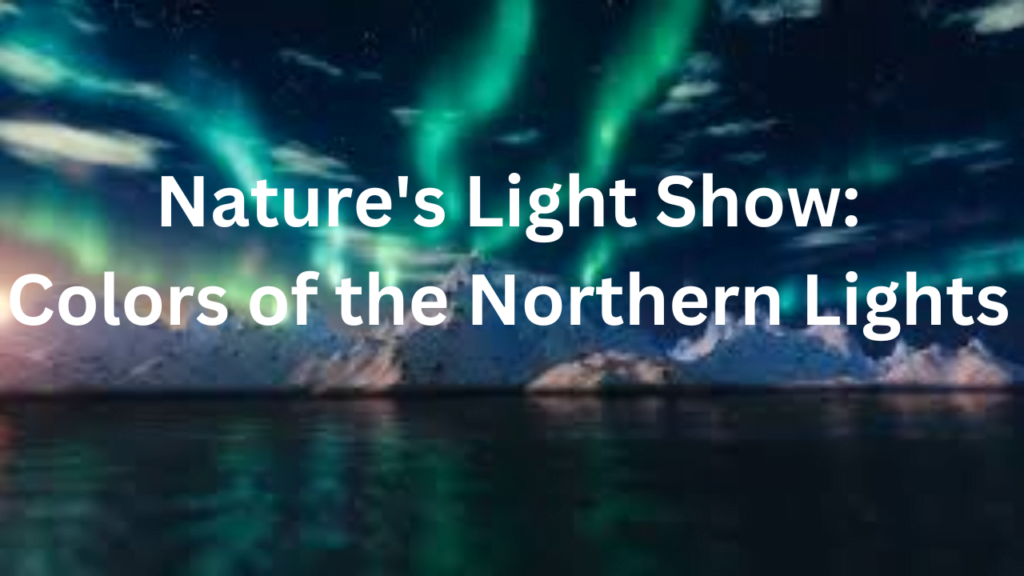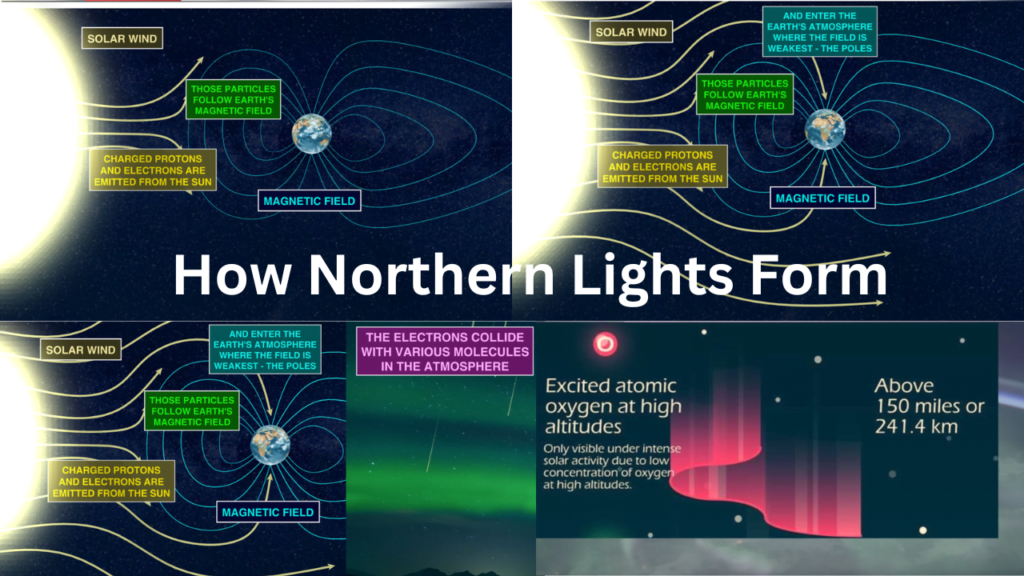
Let us first discuss the initial stages of the development of the northern lights. We must begin with the sun’s top atmosphere, known as the corona. If you were able to see the solar eclipse on April 8th, you would have seen this since the corona is visible on the Moon’s outer edge during totality. The corona emits electrically altered particles at all times and at varying magnitudes, which we refer to as solar wind.
From Solar Wind to Aurora: The Science Behind the Northern Lights
When the solar wind reaches Earth, it might take many days for it to travel across space and start interacting with the Earth’s magnetic field. Fortunately, the solar wind is deflected by our magnetic field, which helps shield humans from harm at the surface. However, there are weak spots in the magnetic field near the poles. The interaction between the electrically charged particles and the Earth’s atmosphere at these locations results in the northern lights that we witness.
Here’s a quick list of gases found in the Earth’s atmosphere:
Nitrogen: 78 %
Oxygen: 21 %
Other gases (mostly argon): 0.93%
Carbon dioxide: about 0.04 %

Remember that water vapor is not on this list. As we were talking about the northern lights, we also said that the Earth’s atmosphere interacts with the electrically charged particles. The two main gases in Earth’s atmosphere are nitrogen and oxygen, and it is these two gases that interact with those electrically charged particles the most to cause the northern lights. The interaction’s height is also important.
Starting at the top, let’s explore some of the colors we can now see. In reality, only very strong solar activity makes the red hue you see apparent. Excited oxygen molecules generate it. At 150 miles above the Earth’s surface or higher, the red hue is present.
The most frequent color you observe when viewing the northern lights is moving downward. All of the excited oxygen molecules that give the atmosphere its green hue are found at lower atmospheric altitudes, up to 150 miles above Earth’s surface.
Given that nitrogen is the most prevalent gas in the atmosphere, we must take it into consideration right now. Purple or blue hues may occasionally be visible together with the northern lights. And that’s precisely where nitrogen enters the picture. When electrically charged particles interact with ionized nitrogen molecules at lower atmospheric pressures, where oxygen is less prevalent, the hues purple or blue are usually observed. More greater solar activity is required, in a similar manner to the occasional red coloration.
If you were fortunate to see it over the weekend, this was an amazing event all around.






